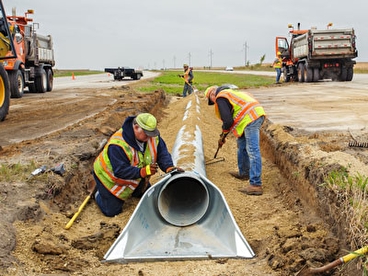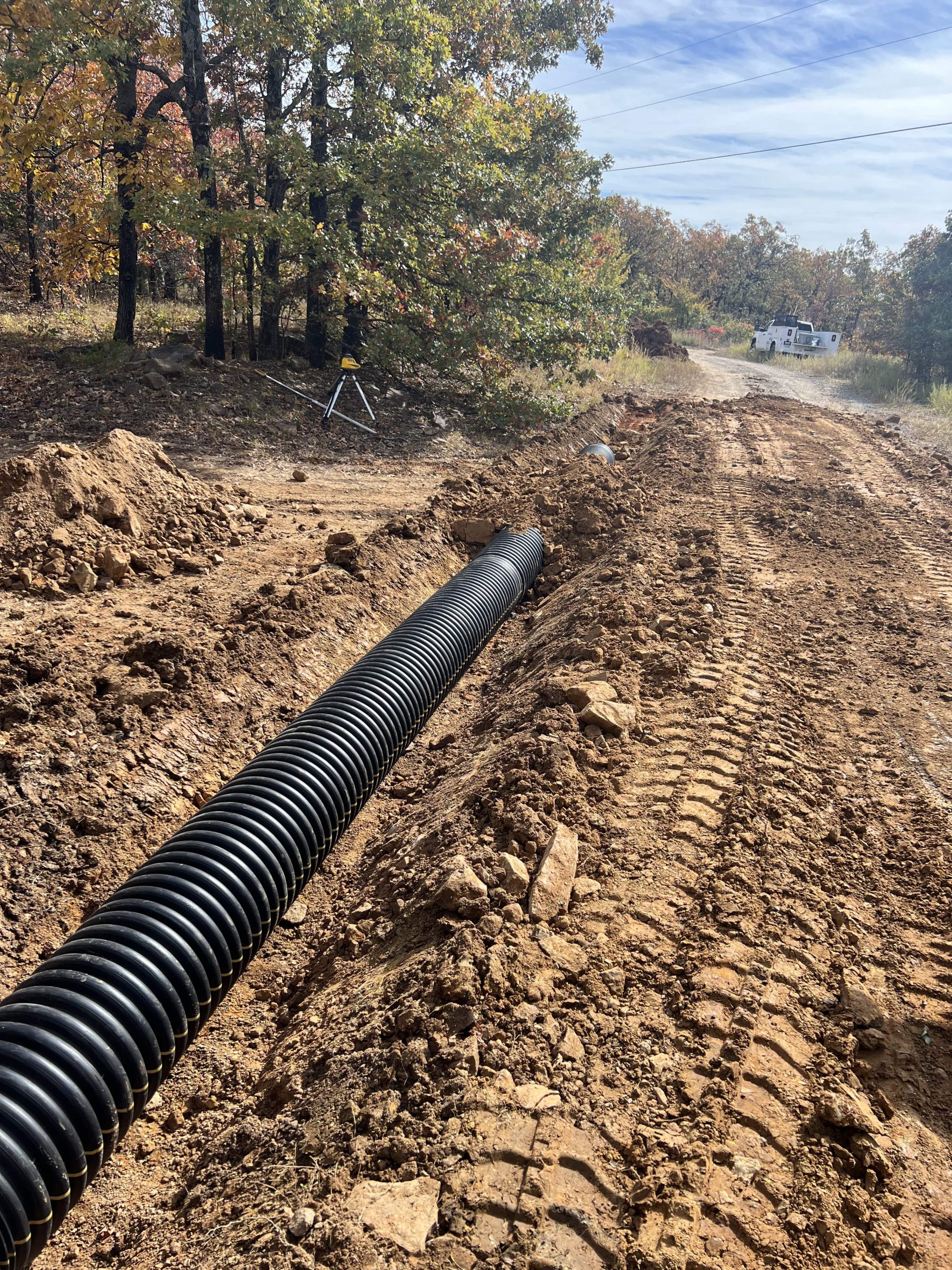Thorough Underbrush Clearing for Land Management
Thorough Underbrush Clearing for Land Management
Blog Article
Culvert Setup Facilitated: Step-by-Step Overview for Success
Installing culverts might appear like a straightforward job, yet ensuring a successful result calls for careful planning and execution. From picking the appropriate culvert dimension to incorporating appropriate drainage steps, each action in the installment procedure plays a critical function in the performance and longevity of the culvert system. By adhering to a systematic strategy and taking note of essential details, the installment can continue efficiently, reducing prospective concerns down the line. Keep tuned to discover the essential steps and considerations that can make culvert installation a smooth and effective endeavor.
Selecting the Right Culvert Dimension
Picking the appropriate culvert dimension is crucial for making sure effective water flow and architectural stability in culvert setup tasks - Pad Construction. The dimension of the culvert directly influences the flow ability of water through the structure. A culvert that is also small can result in flooding and overflow, while one that is as well big may cause decreased water velocity, possibly creating debris build-up and obstructions
To figure out the appropriate culvert dimension, elements such as the watershed location, peak flow rates, and hydraulic effectiveness need to be thoroughly thought about. Estimations based on these criteria help in picking a size that can adequately deal with the predicted water quantity while reducing the risk of obstructions and structural failing.
It is vital to get in touch with design guidelines and criteria to make certain that the picked culvert dimension satisfies the task demands and neighborhood regulations (Pad Construction). By picking the right culvert size, project managers can maximize water flow, prevent possible problems, and enhance the total efficiency and durability of the culvert setup
Preparing the Installment Website
Reliable culvert setup necessitates meticulous preparation of the installment site to ensure optimal architectural assistance and capability. Prior to beginning the installation procedure, it is important to remove the site of any debris, greenery, or obstructions that might hamper the culvert's positioning. Making certain a degree foundation is important for the correct alignment and stability of the culvert. This might involve grading the website to produce a smooth, also surface that can sufficiently support the weight of the culvert and any type of expected loads. Additionally, correct compaction of the soil under the culvert is needed to avoid clearing up or shifting with time.
Moreover, it is necessary to take into consideration aspects such as dirt make-up, groundwater levels, and environmental effects when preparing the installation website. Performing a complete website analysis can aid recognize any type of prospective obstacles or threats that might affect the culvert's efficiency. By making the effort to prepare the installment website appropriately, you can assist ensure a successful culvert installation that fulfills architectural requirements and makes certain lasting functionality.
Positioning the Culvert Properly

The grade at which the culvert is placed is critical for maintaining a correct incline for water circulation. A steady incline assists stop merging and advertises reliable water drainage. Furthermore, the culvert ought to be oriented correctly to guarantee that the inlet and outlet are in the appropriate areas. This positioning is essential for the culvert to operate efficiently in taking care of water flow.
Backfilling and Condensing the Soil
Appropriate backfilling and compaction of the dirt around the culvert is essential to guarantee security and stop prospective issues in the future. As soon as the culvert is appropriately put, the next essential step is to backfill the area around it with see here ideal material.
After putting the backfill product, it is essential to portable it in layers of consistent density. Using a compactor or a mechanical tamper, portable the dirt gently to prevent damaging the culvert. Compaction helps in lowering the possibilities of negotiation and ensures uniform support around the culvert. It is vital to portable the soil evenly on all sides of the culvert to preserve its structural honesty.
Appropriate backfilling and compaction not just offer security to the culvert yet also aid in preventing dirt disintegration and keeping the durability of the culvert system.
Guaranteeing Appropriate Drain Integration
Integrating efficient drainage services plays a critical function in the total functionality and durability of culvert installations. Proper water drainage integration is important for handling water flow, avoiding disintegration, and guaranteeing the structural honesty of the culvert system. To accomplish this, it is important to design a comprehensive drain plan that considers aspects such as the quantity of water expected, the topography of the location, and the kind of soil present.

Furthermore, including features like disintegration control measures, such as riprap or plants, can even more enhance the effectiveness of the water drainage system. By very carefully preparing and implementing these drainage solutions, culvert installments can function efficiently and withstand the examination of time.
Conclusion
In find out conclusion, proper culvert installment is essential for maintaining reliable water drainage systems. By picking the best culvert size, preparing the installment website, putting the culvert properly, backfilling and condensing the dirt, and making certain appropriate water drainage combination, success can be achieved. Following these steps will certainly help guarantee the long life and effectiveness of the culvert, ultimately adding to the total success of the drain system.
Report this page